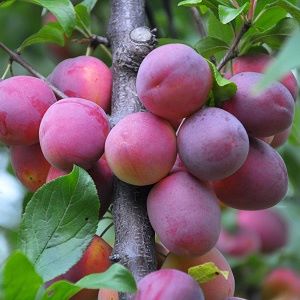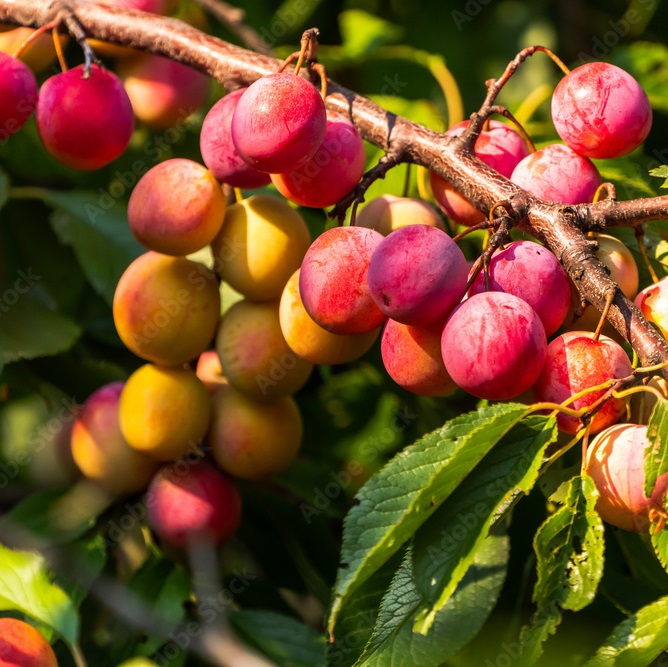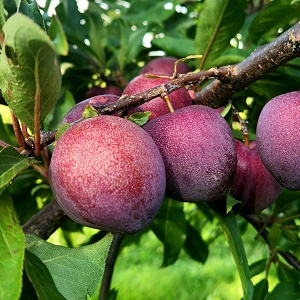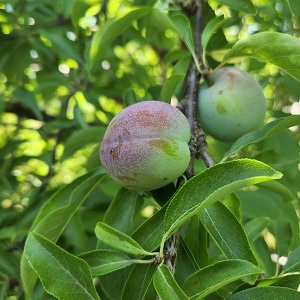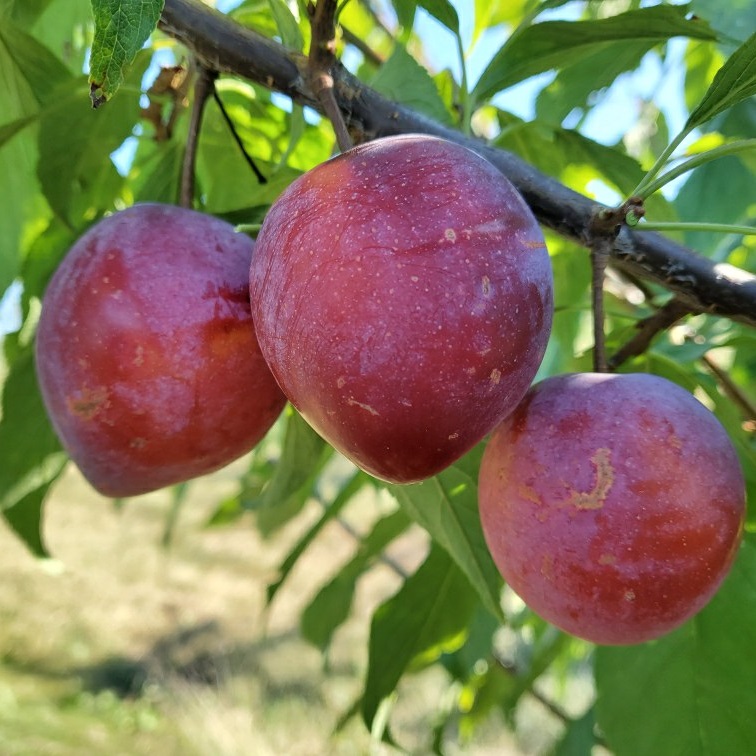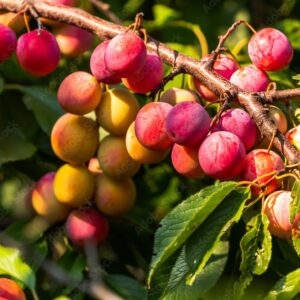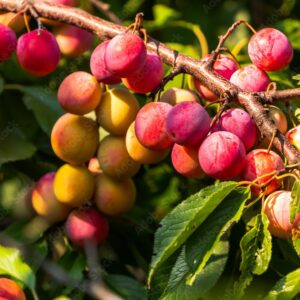American Hybrid Plum : KUBAN COMET Semi-Dwarf (Mustang) (Orchard Grade)
$42.95
An 'orchard grade' is a tree that may be somewhat shorter, slightly crooked, or a bit scratched, or for some other reason is not a perfect front lawn specimen. These trees will work just as well in an orchard as a first or number one would, since they still produce the very same fruit.
Kuban Comet kicks off the plum season with consistently bountiful yields of firm, mid-sized, burgundy/purple fruit. Extra sweet, deep yellow, clingstone flesh is covered by thin, crack-resistant, slightly tart skin. This unique hybrid plum is one of several developed by Gennadiy Eremin at the Vavilov Institute in Krymsk, Russia. A cross of Asian cherry plum, (Prunus cerasifera) Kuban Comet offers invincible cold-hardiness in a very compact, reliable tree.
SELF-FERTILE | ZONE 3 | HARVEST : EARLY AUG.
Rootstocks
G41 Dwarf
G935 Small Semi-Dwarf
G969 Small Semi-Dwarf
G30 Semi-Dwarf
G890 Semi-Dwarf
Pollenator definitions
NEEDS A POLLENIZER ̶ means another tree of the same type or kind but a different variety must be blooming nearby at the same time.
EXAMPLE A Liberty apple and a Wealthy apple can cross-pollinate. Two trees of the same variety ie: ̶ 2 Wealthy apples, cannot cross pollinate because they are genetically identical.
Other trees are marked as SEMI-FERTILE. These will set fruit without a second tree. However they will often bear more, and sometimes larger fruit if another variety of the same kind of tree is nearby.
You can select 2 different trees of the same kind marked as NEEDS A POLLENIZER or plant one of those along with one SELF-FERTILE or one SEMI-FERTILE. Also consider ripening times ̶ a Goldrush apple might not start blooming before a Pristine is finished.
